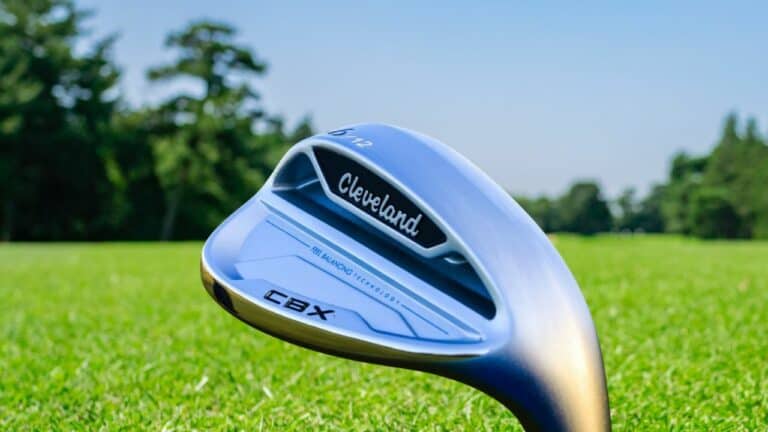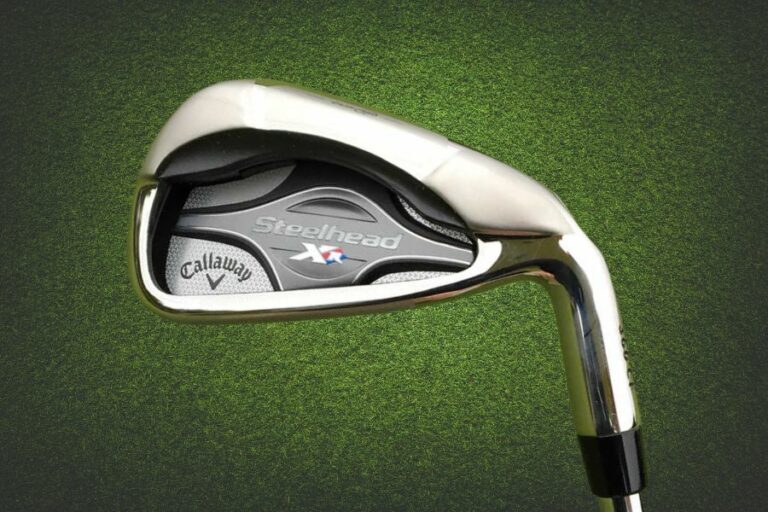Stiff Vs. Regular Flex – Which One Should I Choose?

Understanding the differences between the two commonly known shaft flexes is important to better your game. Here is all you need to know about it.
Flex is the amount of bend a shaft has when force is applied to it. It’s an important factor in determining the overall strength of the shaft.
A regular flex shaft is suited for golfers with average swing speeds, while stiff flex clubs are designed for advanced players with higher swing speeds.
Stiff vs regular flex: The difference
The right combination of shaft material, flex, and overall club design can be the difference between a great shot and one that lands in the rough.
Thus, here is everything you need to know about regular and stiff shafts to make the right choice:
Regular flex
It is the most common flex used by amateur golfers and those new to the game. A regular shaft’s weight, hardness, and flexibility lie between stiff and senior flex.
Here are some noteworthy factors you must consider before using a regular shaft flex:
- Swing speed: Regular flex clubs are designed for golfers with average swing speeds, usually between 80-95 mph.
- Distance: As regular flex shafts have more flexibility and less power, they usually have a shorter carry distance than stiffer shafts. For instance, a regular shaft would be recommended if your driver’s carry distance is 220-260 yards.
- Accuracy: Due to the added flexibility of the shaft, it requires more precision, control, and accuracy from the golfer. However, regular flex is popular due to its forgiveness.
- Loft: A Regular shaft being more flexible, provide a higher loft and a little less distance.
Stiff flex
As the name suggests, stiff shafts are firmer, heavier, and harder to bend than regular flex. Stiff flex clubs are designed for advanced golfers with higher swing speeds.
Here are some subjective factors that impact your game if you wish to use a stiff shaft flex:
- Swing speed: Stiff flex clubs are designed for golfers with higher swing speeds, usually exceeding 95 -105 mph.
- Distance: Due to its stiffer design, the stiff shaft will generate more power and provide a greater carry distance than regular flex. A stiff shaft driver may work in your favor if your driver’s carry distance is 260 yards and above.
- Accuracy: The stiffer shaft design will help provide more accuracy and control over the ball, making this type of shaft perfect for golfers who want to hit straight shots.
- Loft: Stiff shafts are lesser in height but provide greater carry distances.
Factors that influence the flex of a shaft
Being aware of the impact of a regular or stiff shaft on your game is integral. However, it is also important to know what factors determine the flex in a shaft.
1. Weight
Graphite shafts are lighter in weight. They weigh about 50-85 gms.
Titanium and graphite shafts being lighter will likely make you swing a little faster compared to steel.
Steel shafts are more stable as they are heavier. Therefore, golfers with a faster or stronger swing should prefer using steel shafts.
2. Flexibility
Golf clubs with a graphite shaft are more flexible than a steel shaft, providing an additional swing speed.
Compared to steel shafts, graphite shafts have a smoother, more comfortable feel and generate more torque, resulting in less control.
3. Durability
Unlike a graphite shaft, a steel shaft offers more durability and a solid feel and is far more responsive when making contact with the golf ball. Additionally, they weigh in at 90-120 grams.
4. Forgiveness
A golfer with injuries or medical conditions in their arms should ideally use a graphite shaft as it tends to be more forgiving. Thus, they do not impact your wrists or elbows.
5. Kick point
Another factor that influences the flex of a shaft is its kick point.
The kick point refers to a point in the shaft where it flexes/ bends the most, which is located in a 3-inch area around the middle of the shaft.
- Higher Kick Point
The high kick point keeps the ball low, the mid-kick point keeps the ball mid-level, and the low kick point keeps it high.
Moreover, the ball may cover distance but lose trajectory at a higher kick point.
- Lower Kick Point
On the other hand, at a lower kick point, the ball may lose distance but have a higher trajectory.
Stiff shafts tend to have a higher kick point that allows the player to control speed and landing distance when played with enough power.
It is best to go to a club fitter to determine your ideal shaft, as each swing’s kick point will differ.
6. Torque
Torque is the degree to which the shaft can twist.
Golfers with high-speed swings can benefit from stiff shafts, as they generate lower torque and help optimize performance.
Conversely, players exhibiting slower speeds should choose a regular shaft that creates higher torque levels for improved launch speed.
Choose your flex based on your golf swing speed
Given- below is a chart that will assist you in choosing a flex based on your swing speed.
| Swing speed | Club | Swing speed range | Shaft flex |
| Fast | Driver | 97-104 mph | Stiff |
| Fast | 3-wood | 93-97 mph | Stiff |
| Fast | 3-hybrid | 90-96 mph | Stiff |
| Fast | 6- iron | 84-91 mph | Stiff |
| Average | Driver | 84-96 mph | Regular |
| Average | 3-wood | 84-93 mph | Regular |
| Average | 4-hybrid | 80-90 mph | Regular |
| Average | 6-iron | 75-83 mph | Regular |
Conclusion
The flex of a shaft greatly influences the performance of your swing. Choosing the right one is important, as every golfer has a different swing speed and style. However, consider the other factors that will assist you in choosing the right shaft for your style of play.








